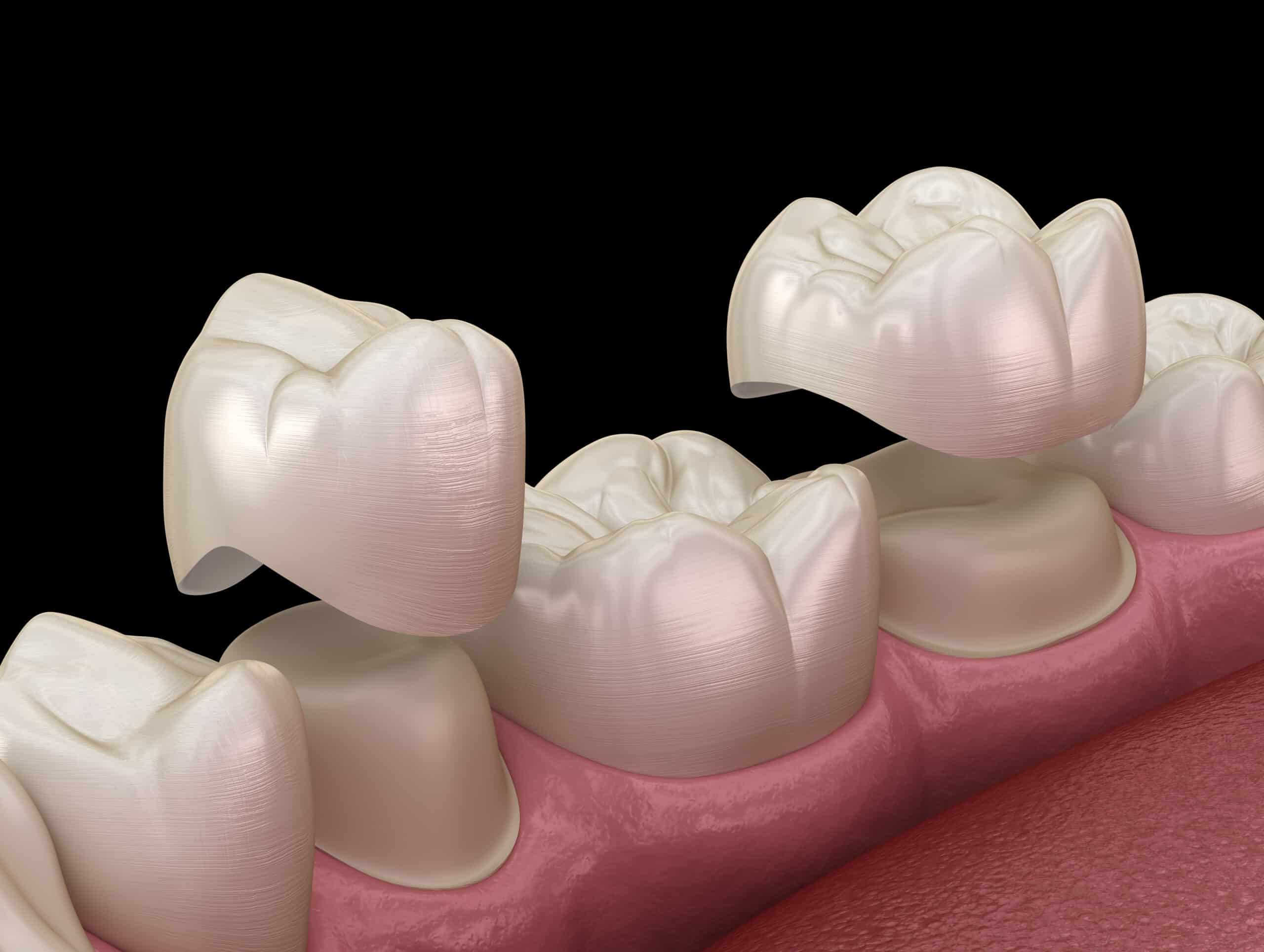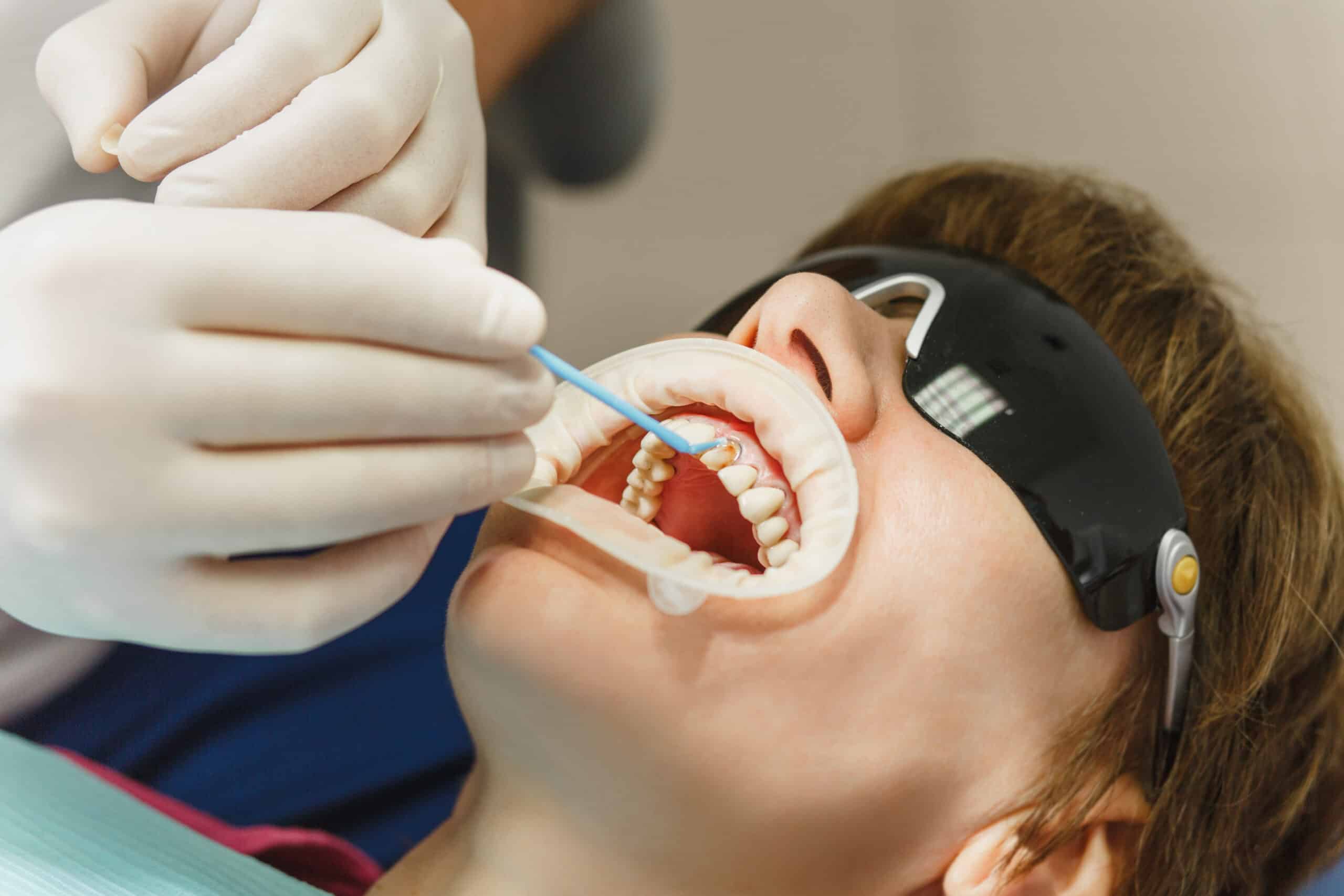If you’ve ever found yourself sitting in a dentist’s chair, anxiously awaiting the procedure to fix that pesky broken or decayed tooth, then I’m sure one question has crossed your mind: “Is getting a crown going to hurt?” Let me assure you right away – it’s not as scary as it seems.
Dental procedures have come a long way over the years and today, they’re designed with patient comfort in mind. Anesthesia is commonly used during crown placement procedures to numb the area around the affected tooth. So while you might feel some pressure or movement, pain shouldn’t be part of your experience.
It’s important to note though that everyone has different pain thresholds and reactions to anesthesia – what feels like slight discomfort for one person may be more uncomfortable for another. Post-procedure sensitivity can also occur but usually subsides after a few days. Remember, communication is key! If at any point during your dental visit you feel uneasy or painful sensations beyond what was anticipated – let your dentist know immediately.
Understanding Dental Crowns

So, you’re considering getting a dental crown and wondering what exactly that entails? Let’s shed some light on the subject. Essentially, a dental crown is a cap or cover that your dentist places over a tooth to restore its shape, size, strength, and appearance. It’s custom made for each patient to fit perfectly and mimic the natural color of your teeth.
Now you may be thinking: why would I need one? There are several reasons why dentists recommend crowns. Maybe you’ve got a tooth that’s severely worn down or weakened by decay – this can make it vulnerable to breakage without protection. A large filling might have left little of your original tooth structure remaining; again leaving it at risk without additional support. Or perhaps there’s cosmetic concern where an unsightly discolored or misshapen tooth needs disguising.
It might sound intimidating but trust me – modern technology has revolutionized the process! These days dentists use digital scans instead of those old-fashioned messy impressions they used to take in past decades (anyone else remember gagging on those?). This means not only do we get more accurate measurements but also – good news for anyone feeling apprehensive about pain – less discomfort during fitting.
That said let me reassure you further; local anesthesia will be used so any discomfort during the procedure itself should be minimal if felt at all! Moreover aftercare tends to involve nothing more than regular brushing flossing and routine dental checkups so no extra hassle there!
Remember though everyone’s experience varies depending upon individual factors such as general oral health condition sensitivity threshold etc., So while most people find getting crowns relatively comfortable don’t hesitate discussing any concerns with your dentist who’ll address them accordingly.
The Process of Getting a Crown

When it comes to getting a dental crown, I’m here to assure you that the process is straightforward and typically not as painful as one might imagine. A lot of folks have asked me about this, so let’s dive into what you can expect.
Initially, your dentist will numb the area around the tooth with a local anesthetic. This means you won’t feel anything during the procedure itself – good news for those with dental anxieties! After numbing your mouth, they’ll file down or fill in your tooth to prepare it for the crown placement.
Once prepped and ready to go, they’ll take an impression of your tooth (and usually surrounding teeth) using paste or digital scanner. This impression helps ensure that your new crown fits perfectly within your unique bite pattern.
Then comes time for something I like to call “the waiting game.” Your dentist sends off these impressions to a lab where technicians craft your custom-made crown – typically from porcelain or metal alloy based on preference and needs. It usually takes about two weeks until it’s ready for prime time!
During this wait period though don’t worry; you’re not left high and dry! Your dentist fits you with a temporary crown while yours is being made at lab – protecting sensitive areas against damage and maintaining aesthetic appeal!
Finally arrives ‘The Big Day.’ You return back once more when completed masterpiece has been delivered from lab. Then after another quick round of anesthesia (again ensuring no discomfort), permanent piece gets cemented onto prepared tooth by skilled hands performing magic!
That’s all there is folks! It may sound daunting but remember: dentists do this every day — their expertise ensures minimal discomfort throughout entire process.
Is It Painful to Get a Crown?
Let’s dive right into it. I’m sure many of you have this burning question on your mind: “Is getting a dental crown painful?” Well, the answer isn’t as straightforward as one might think.
First off, let me clarify that every person has a unique pain threshold. What might feel like a pinch for some could be an uncomfortable jab for others. However, under normal circumstances and with local anesthesia applied during the procedure, you shouldn’t experience any severe discomfort while getting your dental crown.
But wait! Here’s something interesting – the majority of patients report that the most uncomfortable part isn’t actually having the crown placed but rather when their dentist prepares their tooth beforehand. Now why is this? During preparation, dentists need to reshape your tooth so that it can properly accommodate its new royal cap – or in less fancy terms – your dental crown.
Don’t get me wrong though; we’re not talking about excruciating pain here either! Most people describe it more like slight pressure or vibration due to use of dental drills involved in shaping up those pearly whites!
Here are some things I’ve learned from my own experiences and research:
- Ensure good communication with your dentist: Don’t hesitate to speak up if you’re feeling uneasy.
- Consider sedation options: If anxiety gets better of you during such procedures.
Remember folks! Post-procedure sensitivity or discomfort is common too which gradually subsides within few days after treatment.
So there ya have it – Getting crowned ain’t exactly what we’d call ‘a walk in park’ but then again…it’s definitely not something worth losing sleep over either!
Pain Management During the Procedure

Let’s face it, nobody likes pain. Especially not when it involves your mouth and teeth. But fear not! When getting a crown, your dentist will use anesthetics to ensure you’re comfortable throughout the procedure.
Before we dive in, I’ll explain what happens during a dental crown placement. The dentist first numbs the area around the tooth that needs a crown with local anesthesia. This is usually done using a small needle to inject medicine into your gums.
It’s normal to feel some pressure or mild discomfort as this happens – but don’t worry, that’s just part of applying anesthetic effectively! Now you might be thinking “But isn’t that painful?” Well truthfully yes – there can be brief discomfort from injection itself but typically no more than pinch-like feeling which quickly subsides once medication starts working.
Once numbness sets in (which usually takes few minutes), actual process of fitting and securing new dental crown begins – all while you’re comfortably numb!
What if you’re particularly anxious about dental procedures? Your dentist may opt for sedation dentistry methods such as oral sedatives or nitrous oxide (also known as laughing gas) alongside local anesthesia for added comfort.
Remember each person experiences pain differently due to individual tolerance levels and past experiences with dental treatments. So don’t hesitate discussing any fears or concerns with your dentist ahead of time – they are there to help make experience as stress-free possible!
In case slight discomfort persists post-procedure; over-the-counter analgesics like ibuprofen are commonly recommended by dentists for temporary relief until healing occurs naturally over next few days following treatment.
In conclusion:
- Dental professionals prioritize patient comfort above all else during these procedures.
- A variety of options exist including local anesthesia & sedation techniques aimed at reducing anxiety along ensuring minimal-to-no pain perception during procedure.
- Post-treatment care includes advice on effective home-based pain management strategies to ensure smooth recovery.
Post-Procedure Discomfort: What to Expect
I’ve got news for you – getting a crown doesn’t have to be a pain in the mouth. Sure, there’s likely to be some discomfort post-procedure, but it’s usually manageable and temporary. Here’s what you might expect.
First off, let me tell ya’, your tooth may feel sensitive after the procedure. This is especially true if there was infection or inflammation before the treatment. You might experience sensitivity to hot and cold temperatures as well as sweet foods and beverages. But don’t worry! This usually subsides within a few days or weeks at most.
Secondly, I bet you’re wondering about biting down discomfort? It can happen too! The crowned tooth may feel slightly different than your other teeth when chewing or biting down initially due its new shape and size.
Now here comes something interesting: some people even report minor gum soreness around the treated area which should also resolve within a couple of days with good oral hygiene practices like brushing twice daily using fluoride toothpaste and flossing once daily
Let’s not forget about possible jaw soreness from having your mouth open during the procedure – yep that can leave your jaw feeling tired!
Here are my top tips:
- Over-the-counter analgesics such as ibuprofen (Advil) or acetaminophen (Tylenol) are often recommended by dentists for managing any post-procedure discomfort.
- Topical numbing gels containing benzocaine could help ease gum tenderness.
- Salt water rinses several times per day can soothe inflamed gums.
But remember folks – severe pain isn’t normal after getting dental crowns fitted so if anything feels out of whack, make sure you reach out to your dentist right away!
Tips for Managing Pain After Getting a Crown

I’ve often heard people say, “I’d rather get a crown than go through the pain of a toothache.” While it’s true that getting dental crowns can be an effective solution for damaged teeth, it’s not entirely pain-free. But don’t let that scare you off – there are several ways to manage and minimize discomfort after this procedure.
Firstly, over-the-counter (OTC) pain relievers like ibuprofen or acetaminophen can work wonders in managing post-procedure discomfort. It’s important to remember though, never exceed the recommended dosage on the bottle unless instructed by your dentist or physician.
- Over-the-Counter Pain Relievers: Ibuprofen or Acetaminophen
- Dosage: Follow instructions on packaging
Using ice packs is another simple yet effective way to combat swelling and numb any lingering soreness. Just make sure not to apply ice directly onto your skin; wrap it in a cloth first.
- Ice Packs
- Usage: Apply indirectly via wrapping in cloth
Another tip I swear by is rinsing with warm salt water. Not only does this soothe inflamed gums around the crowned tooth but also promotes healing by killing harmful bacteria.
- Warm Salt Water Rinse
- Preparation: Dissolve half teaspoon of salt into one cup of warm water
- Frequency: Rinse mouth every two hours as needed
Lastly, avoid eating hard foods until your mouth has fully healed from the procedure – usually within two weeks post-operation. During recovery time try sticking with soft foods such as soups and smoothies which require minimal chewing effort.
Remember everyone’s experience will differ slightly based on factors like overall health condition and individual threshold for pain tolerance so always consult with your dentist before starting any self-care routines at home!
When to Contact Your Dentist Post-Crown Procedure
Now, let’s talk about what happens after the crown procedure. It’s natural to feel a bit of discomfort or sensitivity in your mouth following the placement of a dental crown. But when does this mild discomfort turn into something you should worry about?
Post-procedure, it’s not uncommon for patients to experience some tooth sensitivity especially while eating hot or cold foods. This should gradually fade away within a few days as your mouth adjusts to the new crown.
However, if severe pain persists beyond this period or if there are other unusual symptoms, I strongly advise contacting your dentist immediately. Here are some scenarios where reaching out would be wise:
- If you’re experiencing excruciating pain that doesn’t subside with over-the-counter pain relievers
- Swelling in the gums surrounding your crowned tooth
- The feeling that your bite is off – maybe the crowned tooth feels higher than others
- If you notice signs of an allergic reaction like hives, difficulty breathing or swelling around face and throat
In such situations don’t hesitate – it’s better safe than sorry! Remember though: these cases aren’t common and most people find getting a dental crown straightforward with minimal post-procedure issues.
Remember also that everyone heals at their own pace so don’t get too worried if recovery takes slightly longer than expected; however constant communication with your dentist can help ease any concerns along the way.
Conclusion: Demystifying the Experience of Getting a Dental Crown
It’s time to bring our conversation full circle. We’ve taken a deep dive into the world of dental crowns, and I hope that you’re feeling more informed and less anxious about the procedure.
When it comes down to it, getting a dental crown isn’t typically painful. Thanks to modern anesthetics and techniques, your dentist will make sure you’re as comfortable as possible during this process. You may experience some discomfort or sensitivity following the procedure, but this is temporary.
Remember that each person is unique – what one individual feels during their crown placement might be different from another’s experience. Therefore:
- Always communicate with your dentist about any concerns or fears.
- Ask questions until you understand exactly what will happen.
- If needed, discuss pain management options for after the procedure.
I can’t stress enough how important routine check-ups are in maintaining good oral health – they help prevent serious issues like decay or infections which could necessitate procedures such as crowns in future.
In conclusion (but without starting my sentence with ‘in conclusion’), don’t let fear hold you back from getting necessary treatment! Modern dentistry has come so far in ensuring patient comfort throughout various procedures including crown placements. Your smile’s health is worth it!
So there we have it – I hope this article has helped demystify what getting a dental crown involves and alleviated any worries regarding pain associated with its placement!



